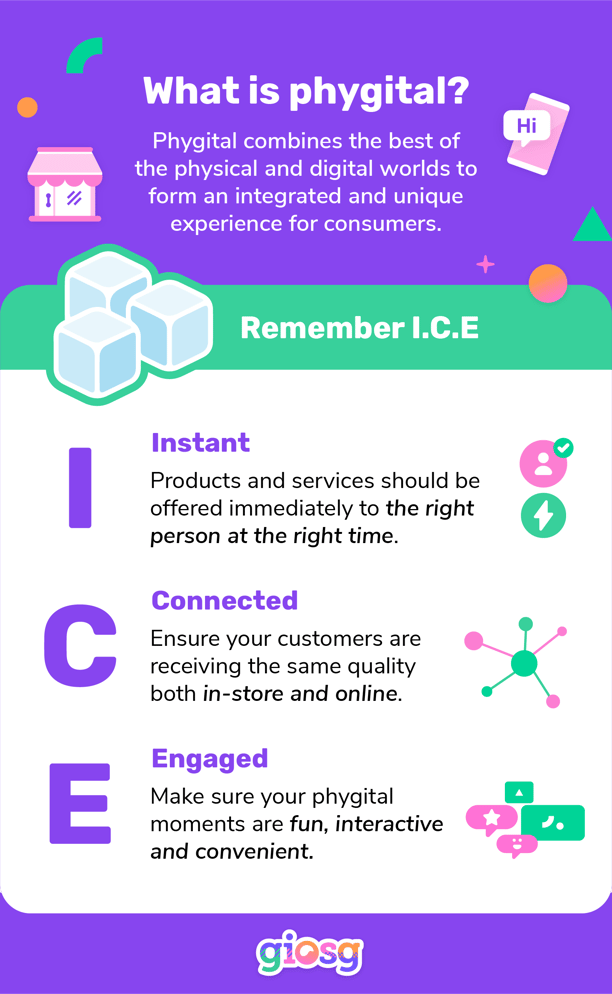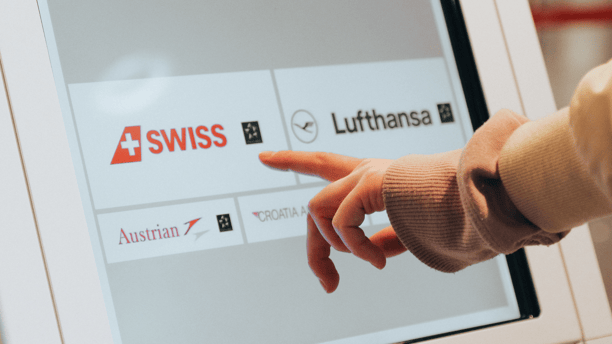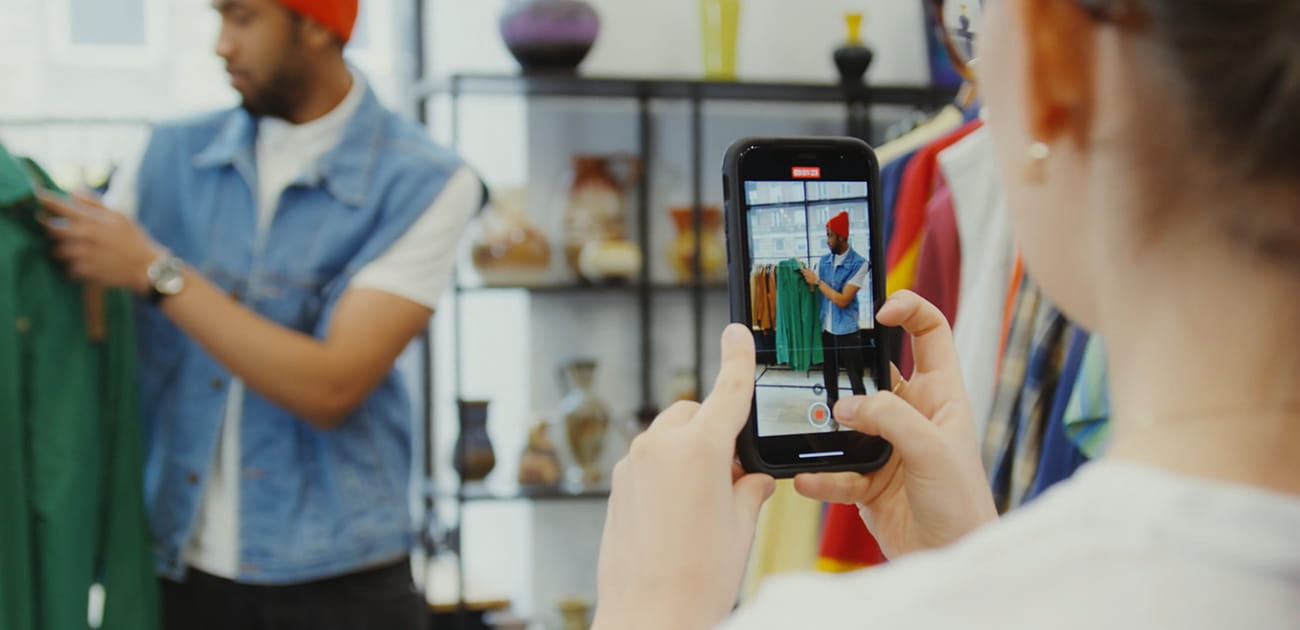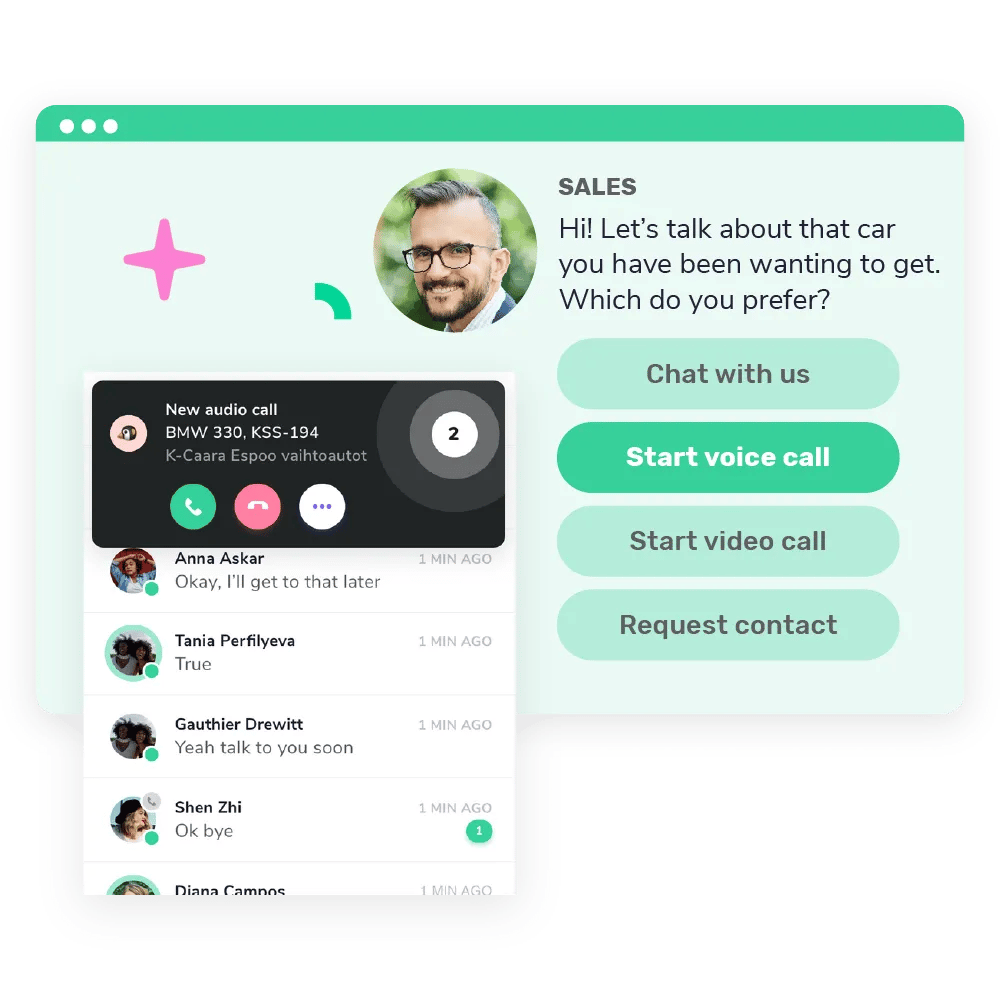Phygital. A word that doesn’t quite roll off the tongue, but nonetheless, it's rapidly making its way into every marketing and customer experience discussion.
But, what is phygital really? Is it only about live shopping? Or is it more?

A phygital strategy aims to combine the best of physical and digital. It’s not necessarily going all physical or opting for a digital-only experience.
If you’ve been fidgeting to understand phygital, we’ll help you understand what it means and teach you ways to make the most out of your phygital strategy.
Here's the agenda:
What is phygital?
Examples across industries
Phygital in Automotive
Phygital in Retail
Phygital in Real-estate
Phygital in Banking
Future of shopping: Phygital retail
What is Phygital?
Phygital bridges the gap between the physical world and the digital.
The objective is to bring the best parts of the physical customer experience into the digital reality and vice versa.
For a phygital strategy to be successful, it needs to be I.C.E:
Instant, Connected, and Engaging.
Instant
The main need that phygital answers to is that craving for right-here-right-now.
Customers operate in a world where instant gratification and immediate service are minimum standards.
57% of customers are ready to switch brands if a company doesn’t anticipate their needs, let alone meet them when presented.
Connected
Going phygital means connecting on multiple fronts.
As the term insinuates, phygital needs to connect the physical aspect of shopping with the digital. Sometimes, this can be executed through virtual reality, or via a one-to-one video shopping opportunity with an in-store brand representative.
All these interactions should feel like a two-way conversation. The customer should feel connected to what’s being offered and feel like the brand empathises with him or her.
This also means that the quality should not be lost when a customer goes to your store after having an engaging experience on your website. 63% of shopping occasions begin online, so make sure you make your presence count.
To successfully implement phygital qualities in your business, you’ll need to make sure connection and immersion are at the core.
Engaging
If a customer doesn’t notice or see the use of your phygital attempts, it may be failing in the engaging and interactive department.
It’s important to make your phygital moments convenient and fun.
For this to have the best results, you’ll want to make sure to offer immersive digital moments on your website to the right visitor, and physical moments in your store that will grab attention.

Phygital customer experiences are more common than you think
You may be thinking that the idea of phygital is futuristic or reserved for those with access to exclusive technology, but that’s not the case.
If you look around the world today, you’ll see phygital elements in everyday places.
Examples of common phygital strategies in practice
Phygital examples in physical spaces
Picture McDonald’s. You walk into the popular fast-food restaurant, and what’s intercepting your path to the checkout counter? Digital kiosks.
This is a perfect example of phygital in action. Even though a customer is in a physical store, some would still prefer the convenience and speed of digital at the same.
Another phygital example that you may have seen is the use of QR codes.
Again, this is an example of delivering additional information and opportunities instantly through a digital platform.
Customers can enjoy the ambience of a restaurant or a store, but to make the buying (or upselling) process even more smooth, businesses may stick QR codes around their brick-and-mortar shops to encourage visitors to continue their experience digitally.

Phygital examples in online spaces
One of the best online examples can be found in the rising trend of live video shopping.
Commerce giants in China ignited this trend, but by now you may have even seen some of your favourite large retailers launching live shopping streams recently, like Nordstrom, Aldo, or your local shopping mall.
This allows consumers to feel like they are trying products and browsing a physical store, while they only need to click a button to purchase the products they like.
If you decide to get started with live video, make sure to avoid the biggest live video shopping mistakes. But more about live shopping to follow.

Examples of phygital experiences in different industries
To better understand how phygital can look in different industries, let’s zoom in on instances where it can thrive.
Phygital examples in automotive 🏎️
If you want to get phygital with your car dealership, it starts with optimising your website for unique interactions. This is also the key to lead generation for online car sales.
With the right type of interactions, you don’t even have to worry about redesigning your whole website, you can bring phygital to your online car dealership with the help of live one-to-one video calls or your very own digital showroom.
Buyers want a tangible experience when shopping for a car. The closest you can get to this, without the customer being in the store, is via video.
Here’s why live video enables a smooth car buying experience. The buyer can:
- Talk face-to-face with a car expert to build trust
- View the car in real-time to diminish any qualms about appearance
- Ask questions without waiting minutes or days for an answer
The buyer can do all these in the comfort of his own home thanks to phygital components.

Phygital examples in retail
As mentioned earlier, the biggest players in the retail industry have taken hold of live video shopping for peak season and beyond.
Live video shopping brings the heart of shopping in-store straight to your desk or couch.
In most cases, you can interact with a live host and ask questions, see specific products in action and feel the buzz of shopping digitally. In this case, the complete physical experience is digitally transmitted to you.
Consumers seem to be loving this type of phygital experience.
Phygital in the real-estate industry
It’s also very possible to go phygital for real estate firms. The possibilities could be on your own company’s website or different housing portals for your properties.
A great way to go phygital is to offer a one-to-one video call option to website visitors who show high interest in a property.
Once you have the right target on a video call, you can build trust and give more details about the property unit they’re interested in, just like you would in person.
According to a US study, 51% of home buyers first found their home on the internet. It's crucial to make the first website interaction count.

Phygital in the banking industry
The banking industry may be the industry that has got phygital figured out.
If you walk into a brick-and-mortar bank location, almost all will have a digital kiosk (or ATM) to help you find out information about your account digitally.
Sometimes customers would prefer to visit the location but still interact with the digital channels. This gives the customer the option that if they do have a concern, an actual human is close to assist if needed.
Most banks also have great web services that cater to online interactions from the beginning to the end of the customer service process.
The only way they could be a little more phygital is again if banks would include the option for video calls so that customers can feel safe speaking to a real representative.
How are brands embracing the future of shopping
Despite the rise of online shopping, physical retail is not going away anytime soon. Many brands are now looking to blend the physical and digital shopping experiences in a trend known as "phygital" retail.
The future is phygital, but why?
Consumers today expect a seamless and convenient shopping experience, whether they are shopping online or in-store. Phygital in retail allows brands to meet these expectations by offering a blend of physical and digital options that cater to different consumer preferences.
For example, a customer may prefer to shop online for the convenience and a variety of options, but also appreciate the opportunity to try on clothes in-store or receive personalized recommendations from a sales associate.
Phygital retail allows brands to offer both options, providing a more personalized and immersive experience for the customer.
Additionally, this kind of customer experience allows brands to collect data on customer preferences and behaviour, which can be used to improve the omnichannel experience and drive sales.
Examples of phygital retail
Many leading brands are already embracing the phygital trend with their retail stores, with some innovative examples including:
-
Nike's "House of Innovation" flagship store in New York City, features a "digital stadium" where customers can try on and customize virtual sneakers using AR, and a "speed shop" that offers a curated selection of popular items that can be purchased using self-checkout kiosks.
-
Sephora's "Beauty TIP Workshop" in San Francisco, combines a physical store with a virtual reality beauty lab where customers can try on virtual makeup and receive personalized recommendations from beauty advisors.
-
Amazon's "Amazon Go" stores offer completely cashier-less retail experiences using AI and computer vision technology to track purchases and charge customers' accounts automatically.
What does the future hold for phygital experiences in retail?
As technology continues to advance and consumer preferences evolve, we will likely see even more brands embracing phygital retail in the coming years.
In 2023, we saw more physical stores featuring innovative technology such as VR and AR to enhance the shopping experience, as well as more seamless integration between online and offline platforms.
Overall, phygital retail represents the future of shopping, as it allows brands to meet the evolving needs and expectations of consumers by offering a convenient and personalized shopping experience that combines the best of both physical and digital worlds.
Don’t wait to go phygital
If you haven’t quite yet set your sights on making your business phygital, you may fall behind your competition.
Phygital encompasses the best of both physical and digital worlds, so if you’re only focusing on one, it is time to intertwine both.
Want to dive deeper into the phygital world? Download our Live Commerce Guide to learn more about the booming live commerce industry which exemplifies phygital perfectly!